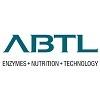Explore all the information on
Amino acids in poultry nutrition
Adequate provision of dietary amino acids is required to maintain normal immunocompetence and protection of the host from some diseases in all species (Beski et al. 2015). Therefore, the development of immune function in poultry will be promoted if they receive sufficient amino acids in their diets. The essential amino acids for poultry are arginine, glycine, histidine, leucine, isoleucine, lysine, methionine, cystine, phenylalanine, threonine, tryptophan, and valine. Out of these, the ones critical in practical diets are arginine, lysine, methionine, cystine and tryptophan.
Introduction In Syria chicken occupies a major place in production and consumption among poultry. It has become the second most popular meat eaten and is most likely to maintain this position. Chicken meat is a good source of protein and many nutrients, and is relatively low in fat, especially if the skin is removed. Chicken meat is also characterized by versatility in menu planning, ease of preparation, consistent quality, and the availability of wide range of pre-packaged, branded,...
Comments : 0
Recommendations: 0
An experiment was conducted to assess the potential for guanidinoacetic acid (GAA) to spare dietary energy and influence muscle myopathies when included in broiler diets. A total of 1,056 male Ross 708 broiler chicks were randomly assigned to 48 floor pens with 22 chicks per pen. Broilers were fed one of four experimental diets and reared to 50 days of age. Dietary treatments consisted of a control (T1), T2 (T1 – 110 kcal/kg apparent MEn), T3 (T2 + 0.08% GAA), and T4 (T1 – 55...
Comments : 0
Recommendations: 0
Craig Coon (University of Arkansas) shares his knowledge regarding this subject, focusing on energy, proteins and amino acids, as well as the advances made in the industry throughout the years, in this interview during IPPE 2023 in Atlanta, USA....
Comments : 6
Recommendations: 5
Evonik appoints Dr. Dirk Hoehler as head of the amino acids business of Animal Nutrition
- Hoehler has wealth of experience within the Evonik Group -Track record in Marketing & Sales including digitalization of business processes -Focus on...
Comments : 0
Recommendations: 0
Introduction The concept of maintenance has been defined as the state of balance between the intake of nutrients and their inevitable losses (Siqueira et al., 2011; Silva et al., 2014; Soares et al., 2019). That contributes to an understanding of the differences in responses between individuals of a population and enhances the requirements concept. Different methodologies have been developed to estimate nitrogen and amino acid requirements for maintenance (Burnham and Gous, 1992;...
Comments : 0
Recommendations: 0
In recent years protein feed ingredients are consistently increasing in cost and protein in poultry diets has become one of the most expensive nutrient. Urbanization is putting pressure to produce more and high quality protein sources in less space. Neutralizing substandard quality feed ingredients with effective tools has also become a new concern. In parallel people are more concerned on impact of animal agriculture on environmental pollution. Hence research has focused in the direction to...
Comments : 19
Recommendations: 8


Effects of Commercial Processing Conditions of Extruded Soybean on Growth Performance and Amino Acids Digestibility of Broiler Chickens
Suggested link
In this video, Dr. Leeson unravels the intricate world of protein and amino acids...
Comments : 0
Recommendations: 1
1. Introduction The best strategy to optimize production and reproduction in poultry species while mitigating the harmful effects of environmental conditions is proper nutrition 1,2,3 . One of the pillars of nutrition is the use of amino acids in poultry diets, among which Methionine (Met) represents the first limiting amino acid in broilers. As Bunchasak 4 reported, Met can act as an amino acid in the synthesis of protein and polyamine, a sulfur donor, a...
Comments : 1
Recommendations: 0
I. Introduction Wheat and sorghum are the two major feed grains used in Australia for broiler diets; however, wheat is more common and is usually considered better quality than sorghum. The local chicken meat industry may have to increase by 60% to meet demand in 2050 so strategies are needed to promote sustainable chicken-meat production to meet this anticipated demand. Crude protein reductions in broiler diets could be a major factor in the quest for sustainable production....
Comments : 0
Recommendations: 0
I. Introduction Guanidino acetic acid (GAA) is a naturally occurring metabolite which is synthesized in the kidney by L-arginine-glycine amidinotransferase (AGAT) using glycine and arginine (Arg) as substrate (Brosnan et al. 2009). Then, GAA is methylated to creatine in the liver using GAA N-methyltransferase (GAMT). Feeding GAA to humans and animals increases creatine in blood and muscle tissues (Ostoic et al. 2013; DeGroot et al. 2018). High creatine in blood has an inhibitory...
Comments : 0
Recommendations: 0


Feed Granulometry and the Importance of Feed Particle Size in Layers
Suggested link
APIs MARKET
In August, the veterinary API market remains weak, and the prices of most mainstream varieties continue to go down. Florfenicol, doxycycline, and amoxicillin have stagnant finishing. At the same time, erythromycin thiocyanate, as an intermediate raw material of azithromycin, clarithromycin, roxithromycin, and erythromycin stearate, has reached a historical high, and Tilmicosin price is going up against the trend. Is this the primary sign of rebound expected by the...
Comments : 0
Recommendations: 0
I. Introduction Methionine plus Cysteine (Cys) requirement of poultry and swine has been determined using graded levels of DL-Met. Currently, Aviagen recommends 0.95, 0.87, and 0.83% SID Met plus Cys for starter, grower, and finisher phases of Ross 308 broilers (Aviagen, 2019). Cobb recommends 0.88, 0.80, and 0.74% SID Met plus Cys for the respective growth phases (Cobb, 2018). Similarly, Brazilian tables recommend 0.99, 0.97, and 0.91% SID Met plus Cys for broilers starter, grower,...
Comments : 0
Recommendations: 0


Lost in the Market Uncertainty Caused by the Outbreak
Suggested link
Description of problem Feed ingredients and feed manufacturing account for 60 to 70% of production costs in an integrated poultry operation. Modern commercial broilers are fed predominately pelleted diets, and researchers have demonstrated how improving pellet quality (PQ), by increasing the percentage of pellets in the diet, further enhances bird performance (Proudfoot and Sefton, 1978; Dozier et al., 2010; Corzo et al., 2011; Lilly et al., 2011; Glover et al., 2016; Lemons and...
Comments : 0
Recommendations: 0
1. Introduction As feed grade amino acids are commercialized at prices that are economically feasible for including in industry poultry diets, nutritionists are able to better supply diets containing amino acid profiles more closely representing ideal amino acid profiles (Baker, 1997). Refinement of dietary amino acid profiles allows for reductions in crude protein (CP), inclusion levels of protein-rich ingredients in the diet and nitrogen excretion in broiler chickens (Kidd et...
Comments : 0
Recommendations: 1
1. Introduction The global demand for chicken-meat is increasing. Globally, poultry meat is expected to represent 41% of all the protein from meat sources in 2030 and exceed the 34% share for pig meat, 20% for beef and 5% for sheep meat [1]. In Australia, the 46.9 kg per capita chicken-meat consumption in 2021/22 is clearly superior to pork (27.7 kg), beef (19.1 kg) and lamb (5.5 kg) with a 47.3% market share [2]. To meet this high consumption, Australian broiler operations processed...
Comments : 0
Recommendations: 0
INTRODUCTION In practice it is very difficult, if not impossible; to formulate diets with natural feed ingredients that will provide all the amino acids needed by broiler chickens in adequate quantities. The optimal use of liquid and synthetic amino acids in animal diets, therefore, becomes important not only in nutrition and economic aspects, but also in environmental aspects. It is well known that optimal use synthetic amino acid improves amino acid balance and protein...
Comments : 4
Recommendations: 1
Nutritionists have access to various ingredients that fulfill methionine (Met) requirements of broilers. Amino acids (AA), such as DL-methionine, are nearly 100% bioavailable while methionine hydroxy analogs are shown to be relatively less bioavailable. Thus, this experiment aimed to determine the efficacy of using a 65% DL-methionine and 35% limestone dilution product (65DLM) compared to a methionine hydroxy analog (MHA) product when included in a diet deficient in total sulfur AA. A...
Comments : 0
Recommendations: 5
This review examines the relative bioefficacy of 2-hydroxy-4-(methylthio) butanoic acid (HMTBA) and DL-methionine (DL-Met) which includes chemical, metabolic, nutritional, and statistical aspects of its bioefficacy. The chemical, enzymatic and biological differences and similarities between these two products are explained and the evidence and reasons for HMTBA relative bioefficacy to DL-Met in monogastric animals are discussed. In addition, appropriate statistical methods for comparing the...
Comments : 12
Recommendations: 12
Mike Persia (Virginia Tech) presented his research on the estimation of this amino acid in poultry diets, during IPPE 2020 in Atlanta, USA....
Comments : 20
Recommendations: 2




















.jpg&w=3840&q=75)










